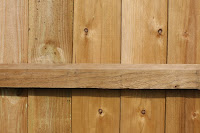 The cold, dark days of winter force even the keenest gardeners to retreat indoors, but there are still lots of gardening jobs to be done from the comfort of your fireside. Here are some of them:
The cold, dark days of winter force even the keenest gardeners to retreat indoors, but there are still lots of gardening jobs to be done from the comfort of your fireside. Here are some of them:Planning
Now is the time to look through seed and plant catalogues and decide what you want to grow next year. The old favourites? Exciting new hybrids? Most people choose some of each. Don’t be seduced by the beautiful photos of perfect specimens. Read the descriptions carefully to check size, flowering season and any special growing requirements to be sure the new plants will fit in and thrive.
Designing
Whether you are looking forward to starting a new garden, or want to improve an existing one, winter is a good time to sit down with paper and pencil – or garden design software – and explore the possibilities of your plot. When foliage has died down, and the leaves are off deciduous trees and shrubs, it’s easier to see the main shapes and lines in your garden.
When you are busy working in the garden you tend to concentrate on the details and forget to stand back and look at the whole. View it from different windows in the house or wrap up warm and look at it from the road. Pretend you are seeing it for the first time. Note which areas are interesting and attractive, and which could do with being altered.
If your new design is going to mean more heavy work than you can manage yourself, or you’re not sure of the best way to put your ideas into practice, ask the advice of a professional landscape gardener who will be happy to visit and give you a free, no obligation consultation.
Start a diary
Begin the New Year with a gardening diary. You can buy a specially designed diary or make your own from an ordinary hardback notebook. Your entries can be as simple or detailed as you like, but recording seed sowing times, when and where you planted different species, which varieties flourished and which were disappointing, will all provide a source of useful information for future years.
Teach yourself
The fascinating – and sometimes frustrating – thing about gardening is that you never stop learning. There are always new plants, tips and techniques to discover. Do you have a pile of gardening magazines that you’ve collected over the past year but haven’t had time to read properly? Settle down now and catch up with what you missed. If you were given a book token for Christmas, treat yourself to a book on a gardening subject that particularly interests you, or visit your local library and borrow a whole armful of books!
However you spend the dreary winter days don’t get too comfy in that armchair. Before you know it, the spring bulbs will be pushing through the snow and it will be time to get back to work!



 But flowers are not the only sources of colour. Red, orange and yellow berries brighten up dull days – at least until the birds have feasted on them.
But flowers are not the only sources of colour. Red, orange and yellow berries brighten up dull days – at least until the birds have feasted on them.









 Tip Two: Think before you plant!
Tip Two: Think before you plant!















 Don’t be afraid to ask lots of questions, any garden landscaper worth their salt will answer them without hesitation. Whatever you do, take your time and ask around for recommendations. All of this will ensure your garden project runs to schedule, is not overpriced and the resulting garden is something to cherish.
Don’t be afraid to ask lots of questions, any garden landscaper worth their salt will answer them without hesitation. Whatever you do, take your time and ask around for recommendations. All of this will ensure your garden project runs to schedule, is not overpriced and the resulting garden is something to cherish.
